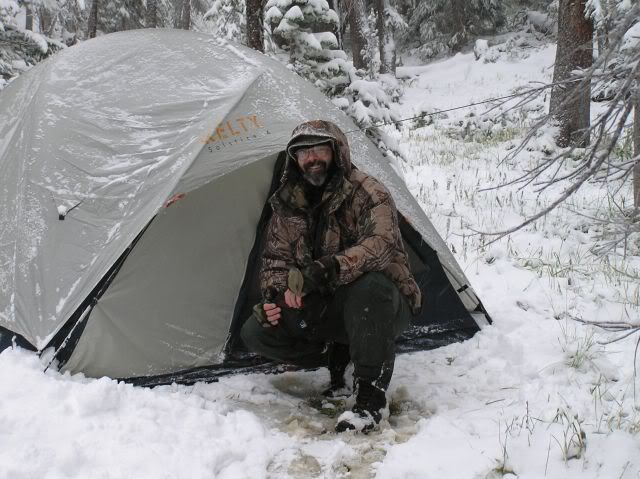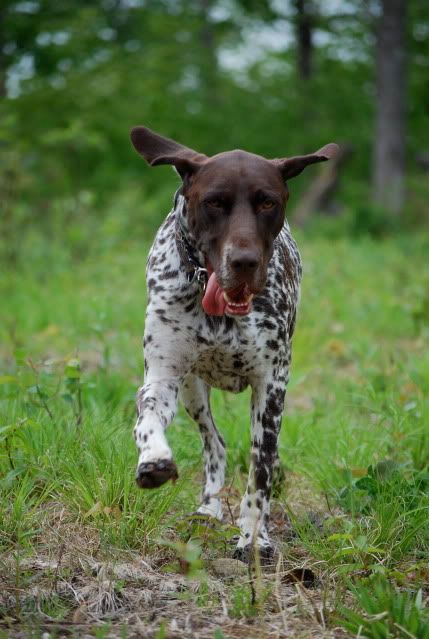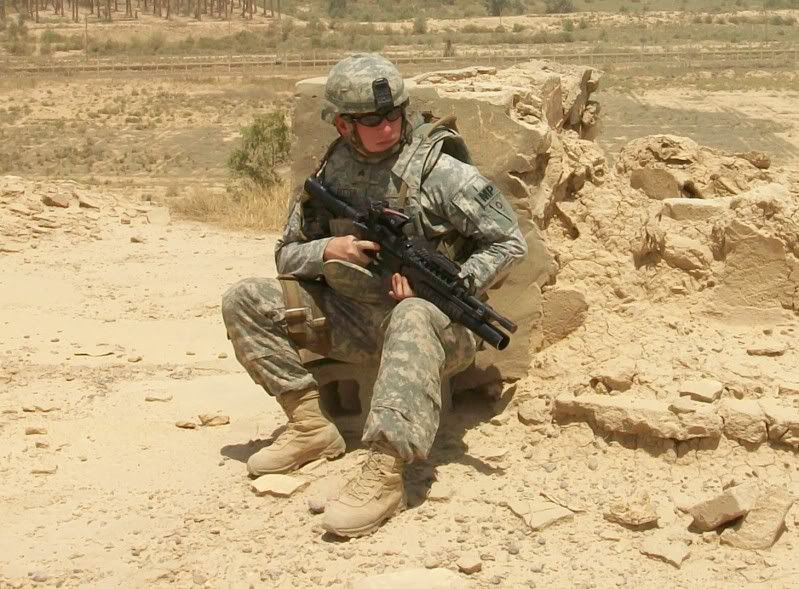Post by smj on Dec 19, 2006 16:01:57 GMT -5
Well, we should be able to handle that! I think you should consider Cedar's boo-backed ash board as a starting point. I would also go pick up a couple of pine slats and work through the getting the basic shape determined - while Cedar finishes the glue up. I think you could end up with a very nice bow, for not a lot of investment. We can pick Cedar's mind for some details as well. Sounds like you have plenty of tools to start with, I'll post some picks of what I do as I build my next bow. What I use should work for you as well.
If you buy from Cedar, you will be ahead of the game. My experience is this:
1 bow board from a bowyers supply: $15 to $35 depending on wood type (Let someone else pick your board the first bow or two. Just one less thing for you to worry over.)
1 bamboo backing, thinned: $20 to $25 (They say ready to glue, but I found this to not be the case - still have to reduce it a bit out at the tips.)
Shipping to deliver: $20 (They charge extra due to the length.)
Plus you need to buy the right glue.
As you can see, as can everyone else, Cedar has a real deal going here and you should consider taking him up on it!
When I have a couple minutes, I'll post some ideas on shape and how to get the form you want. I think Cedar has posted his method before, maybe we can get him to re-post it? ? There are several ways to do this - they all seem to make a nice bow.
? There are several ways to do this - they all seem to make a nice bow.
When you shape the limb, you want very smooth transitions. The grip section, you want at least 8 inches, I use 13.5 inches. Anything outside of the grip section is limb. You want the center of the bow to trace tip to tip right through the middle of the grip section. You would have to glue on a grip wood to the middle of the bow, and cut the nocks. Then tiller the bow, then cut out the grip section. If you leave the grip section flat, it is easier to keep the bow on the tiller jig you will build. The limbs must tapper in an even and graceful way out to the nocks. They must also taper from thicker at the grip section to thinner at the tips. This is why some practice on a pine slat is a good thing to figure out the outline, or shape, of the limbs! (Does you no good at all for tillering.) A small hand plane and a good sander make this fairly quick work. An oscillating sander is what I use, on hard wood. For pine, I take a thin, .5 inch, sanding belt cut in half and glue it to the edge of a .5 board to make a huge nail file. (18 inches long or so...) It works the best for fine shaping the limb edge of the pattern board, at least, I like it a lot on pine. You can use the band saw to rough it out. Yet you will need a #2 pencil or fine point marker to draw the pattern out on the slat. I am out of time here, we can go over that part another time. Oh, before I go, think about draw and bow length. I would make the first bow long - like 68 inches nock to nock - allow an inch on either side for the tip - make the first bow pattern 70 inches end to end. We'll have to ask Cedar how wide his stave is, if you go that way. The thing is, when you get to tillering the bow, if you mess up and end up with a light draw weight - you can cut an inch off of each limb tip and gain back some draw weight. You can not add wood back, but you can shorten the bow to gain draw weight by reducing the moment on the limb. (Gives you a chance at some recuvery if you goof!) There is a carpenters glue that is cheap, water proof, and works great for putting on a grip board... I'll have to check on that when I get home.
The other choice you have here, is to go out and buy a board. You could put a linen backing on it - strong stuff - and get buy for less if money is an issue. That boo-backing makes a very nice bow though! Also, trying to find a good bow board takes some time and effort! Take a read through Cedar's posting in Stick and String : Is It Just a Stick and String? He starts to talk about grain in the wood. The grain can make or break the bow. If you know something about wood and do not fear this feat and wish to buy your own board, we can go over that in more detail. The backing you put on the bow, by the way, is to help keep the bow from breaking. With a good backing, like bamboo, you can get away with a lot more flaws in the wood you use for the belly. I really have to get going! Later -
If you buy from Cedar, you will be ahead of the game. My experience is this:
1 bow board from a bowyers supply: $15 to $35 depending on wood type (Let someone else pick your board the first bow or two. Just one less thing for you to worry over.)
1 bamboo backing, thinned: $20 to $25 (They say ready to glue, but I found this to not be the case - still have to reduce it a bit out at the tips.)
Shipping to deliver: $20 (They charge extra due to the length.)
Plus you need to buy the right glue.
As you can see, as can everyone else, Cedar has a real deal going here and you should consider taking him up on it!
When I have a couple minutes, I'll post some ideas on shape and how to get the form you want. I think Cedar has posted his method before, maybe we can get him to re-post it?
 ? There are several ways to do this - they all seem to make a nice bow.
? There are several ways to do this - they all seem to make a nice bow.When you shape the limb, you want very smooth transitions. The grip section, you want at least 8 inches, I use 13.5 inches. Anything outside of the grip section is limb. You want the center of the bow to trace tip to tip right through the middle of the grip section. You would have to glue on a grip wood to the middle of the bow, and cut the nocks. Then tiller the bow, then cut out the grip section. If you leave the grip section flat, it is easier to keep the bow on the tiller jig you will build. The limbs must tapper in an even and graceful way out to the nocks. They must also taper from thicker at the grip section to thinner at the tips. This is why some practice on a pine slat is a good thing to figure out the outline, or shape, of the limbs! (Does you no good at all for tillering.) A small hand plane and a good sander make this fairly quick work. An oscillating sander is what I use, on hard wood. For pine, I take a thin, .5 inch, sanding belt cut in half and glue it to the edge of a .5 board to make a huge nail file. (18 inches long or so...) It works the best for fine shaping the limb edge of the pattern board, at least, I like it a lot on pine. You can use the band saw to rough it out. Yet you will need a #2 pencil or fine point marker to draw the pattern out on the slat. I am out of time here, we can go over that part another time. Oh, before I go, think about draw and bow length. I would make the first bow long - like 68 inches nock to nock - allow an inch on either side for the tip - make the first bow pattern 70 inches end to end. We'll have to ask Cedar how wide his stave is, if you go that way. The thing is, when you get to tillering the bow, if you mess up and end up with a light draw weight - you can cut an inch off of each limb tip and gain back some draw weight. You can not add wood back, but you can shorten the bow to gain draw weight by reducing the moment on the limb. (Gives you a chance at some recuvery if you goof!) There is a carpenters glue that is cheap, water proof, and works great for putting on a grip board... I'll have to check on that when I get home.
The other choice you have here, is to go out and buy a board. You could put a linen backing on it - strong stuff - and get buy for less if money is an issue. That boo-backing makes a very nice bow though! Also, trying to find a good bow board takes some time and effort! Take a read through Cedar's posting in Stick and String : Is It Just a Stick and String? He starts to talk about grain in the wood. The grain can make or break the bow. If you know something about wood and do not fear this feat and wish to buy your own board, we can go over that in more detail. The backing you put on the bow, by the way, is to help keep the bow from breaking. With a good backing, like bamboo, you can get away with a lot more flaws in the wood you use for the belly. I really have to get going! Later -







